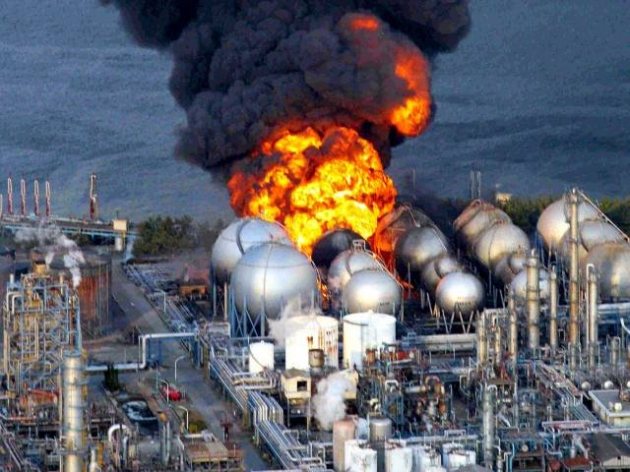Fukushima Daiichi
Fukushima Daiichi was one of the one of the largest earthquakes in the recorded history of the world occurred on the east coast of northern Japan March 11 2011. The Great East Japan Earthquake of magnitude was of 9.0 at 2.46 pm.
This earthquake also generated a major tsunami, causing nearly 20,000 deaths. Electricity, gas and water supplies, telecommunications, and railway service were all severely disrupted and in many cases completely shut down. These disruptions severely affected the Fukushima Daiichi nuclear power plant, causing a loss of all on-site and off-site power and a release of radioactive materials from the reactors.
Facts
* All three cores largely melted in the first three days.
* The accident was rated 7 on the INES scale, due to high radioactive releases in the first few days.
* After two weeks the three reactors (units 1-3) were stable with water addition but no proper heat sink for removal of decay heat from fuel. By July they were being cooled with recycled water from the new treatment plant. Reactor temperatures had fallen to below 80ºC at the end of October, and official ‘cold shutdown condition’ was announced in mid December.
* Apart from cooling, the basic ongoing task was to prevent release of radioactive materials, particularly in contaminated water leaked from the three units.
* There have been no deaths or cases of radiation sickness from the nuclear accident, but over 100,000 people had to be evacuated from their homes to ensure this.
Now, Japan is about to embark on a cleanup that could cost at least $100bn – on top of the cost of compensating evacuees and decontaminating their abandoned homes.
Fukushima Daiichi’s manager, Takeshi Takahashi, conceded that decommissioning the plant could take 30 to 40 years.
The leadership of the American Nuclear Society commissioned the American Nuclear Society Special Committee on Fukushima to provide a clear and concise explanation of what happened during the Fukushima Daiichi accident, and offer recommendations based on lessons learned from their study of the event.
By the end of this year, Tokyo Electric Power Company (Tepco) says it will begin removing fuel assemblies from the reactor and placing them in a nearby cooling pool, where they will remain for four years before being stored in dry casks in a purpose-built facility on higher ground.In total, workers will have to extract more than 11,000 new and used fuel assemblies from seven badly damaged storage pools.
Work to remove melted fuel won’t begin until 2021, and the entire decommissioning project is expected to take up to 40 years.
Works Cited
http://fukushima.ans.org/
http://www.world-nuclear.org/info/fukushima_accident_inf129.html
http://en.wikipedia.org/wiki/Fukushima_Daiichi_Nuclear_Power_Plant


yulung.y
March 8, 2013 - 4:12 am
This was a devastating news back then. I still remember after the nuclear reactor exploded, a various number of people is scared to travel to Japan due to the contamination. People are scared the food and the air they breathe in is contaminated and will harm their health. Overall, really good blog and great images on what happened in the explosion area.
Michael Kors Coupon Code
March 19, 2013 - 1:25 pm
I have been exploring for a little bit for any high quality articles or weblog posts on this sort of space . Exploring in Yahoo I at last stumbled upon this website. Reading this info So i抦 satisfied to exhibit that I have a very just right uncanny feeling I came upon just what I needed. I most undoubtedly will make certain to do not overlook this web site and give it a look regularly.